Festen, Handy-cam the soundscape of the cut and recording from one scene to another causing nostalgia. The crowded to the more calm. Reminds me of my grandma recording our home videos and the way it would cut from being for example at the zoo to being home in the living room with my family and the static and muffled sounds.



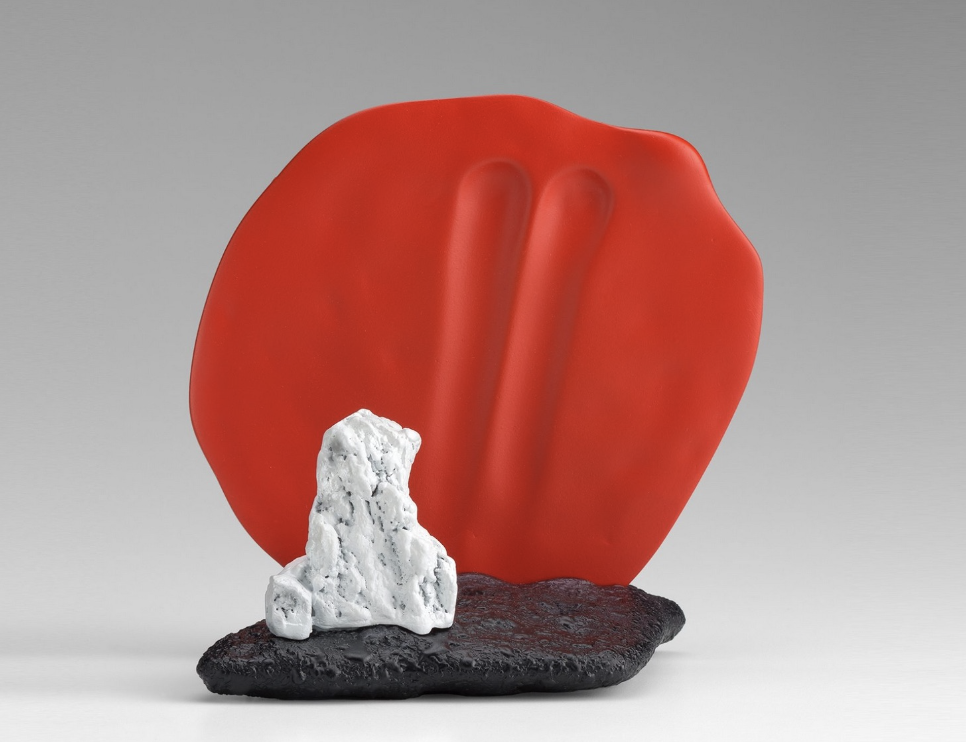
The works of Richard Shaw at first glance seem quite literal and to not allow imagination. What I find interesting is the scene of the classic still life in clay form and recreating a scene that becomes somewhat cinematic in its solid form.
"The human aspect of the still life or assemblage acts as a person memorializing their identity using the objects from their personal narrative. The narrative itself reveals their tastes, pastimes, intellectual pursuits, sins, habits good and bad, obsessions, etc."
Richard Shaw
This ties into my prior research on objects and the significance they have on forming us as people and what they can represent and what narratives they translate. They can also cause memory and taking us back to a moment in time. This state of nostalgia and the action of it really fascinates me.
There are of course positive memories as there are negative ones that can be triggered or associated with objects.
"In the world of contemporary ceramics, Richard Shaw is the master of trompe-l’oeil sculpture. He has developed an astonishing array of techniques, including perfectly cast porcelain objects and overglaze transfer decals. By combining the commonplace with the whimsical, the humorous with the mundane, Shaw captures the poetic and the surreal with the sensibility of a comedian."
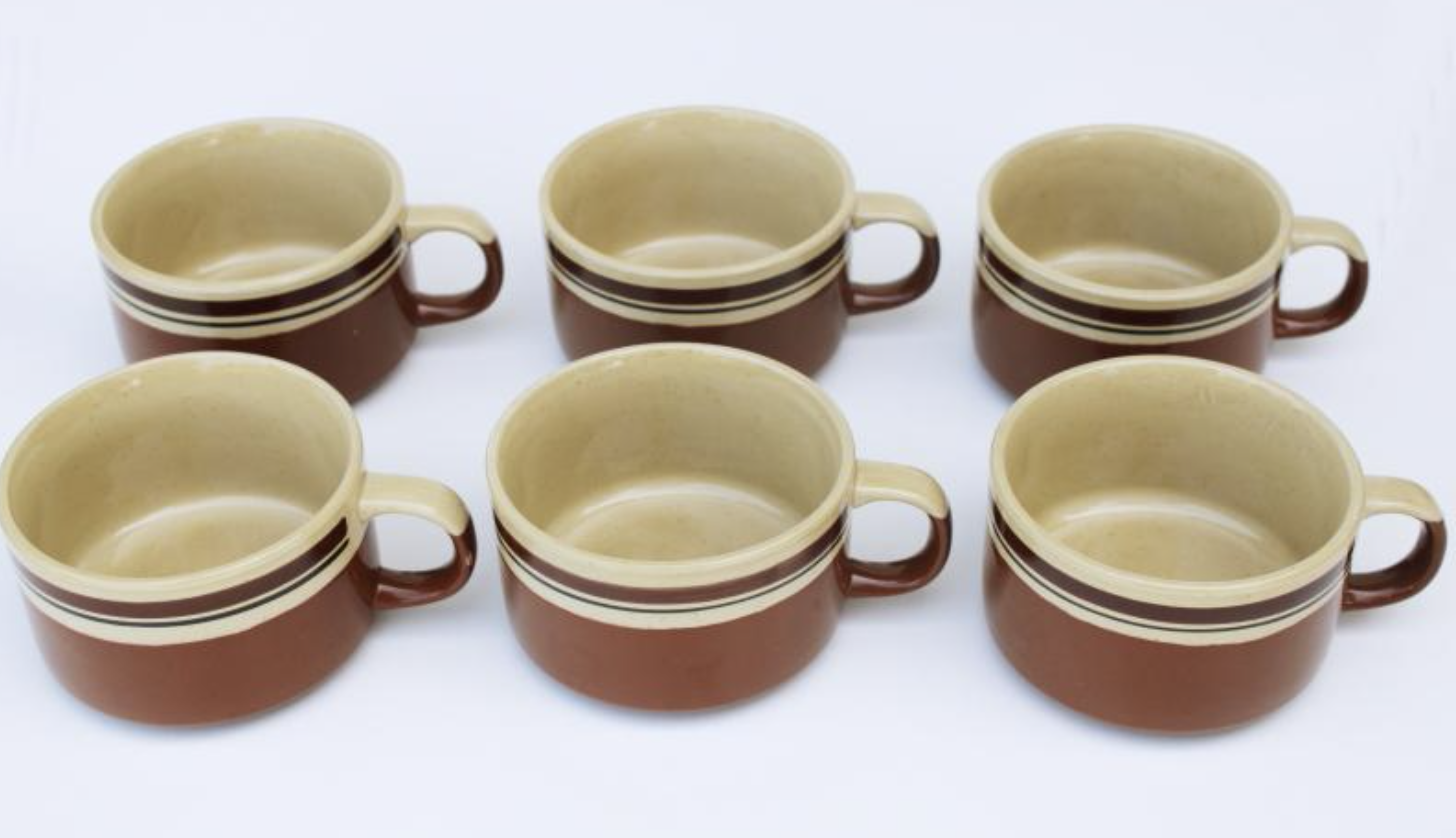
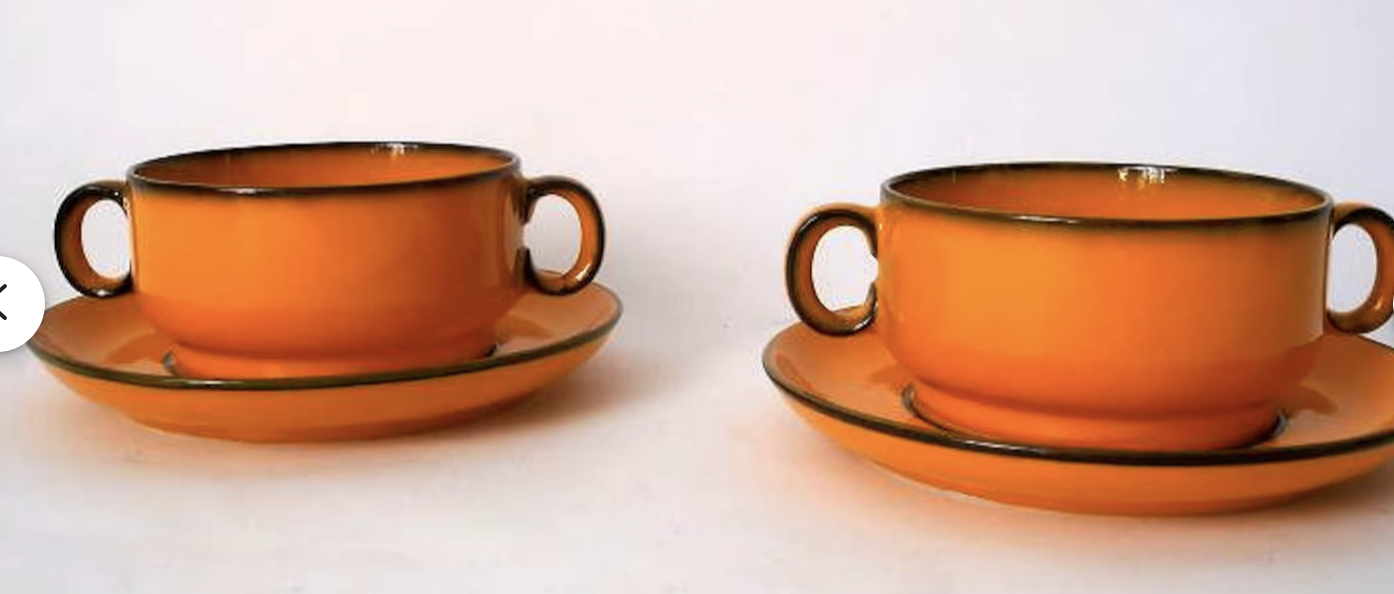

Bruce Sherman-Eyes and hands are particularly frequent among his figurative sculptures. “The eye has a lot to do with being aware of oneself and seeing; I’m hoping to tell a story visually rather than be didactic,” he says. He gestures to a figure with a tiny pair of eyeglasses and a cap covered in eyes, a sculpture he describes as a scholar, deep in thought. The hands, he says, stress the importance of prayer. “Working in clay is almost like a way of praying.”
This is evidenced by Sherman’s take on the mythological goddesses The Three Graces, which sees a trio of sculptures of cleaning ladies (one holds a small broom, two have tiny spray bottles). Or a past series, for which he created ceramic pieces inspired by the works of Jean Arp, and attached them to gold poles and stones. “Arp is very elevated,” he says, “my idea was to bring it down to Earth, so it’s ‘Arp on a Rock.’”
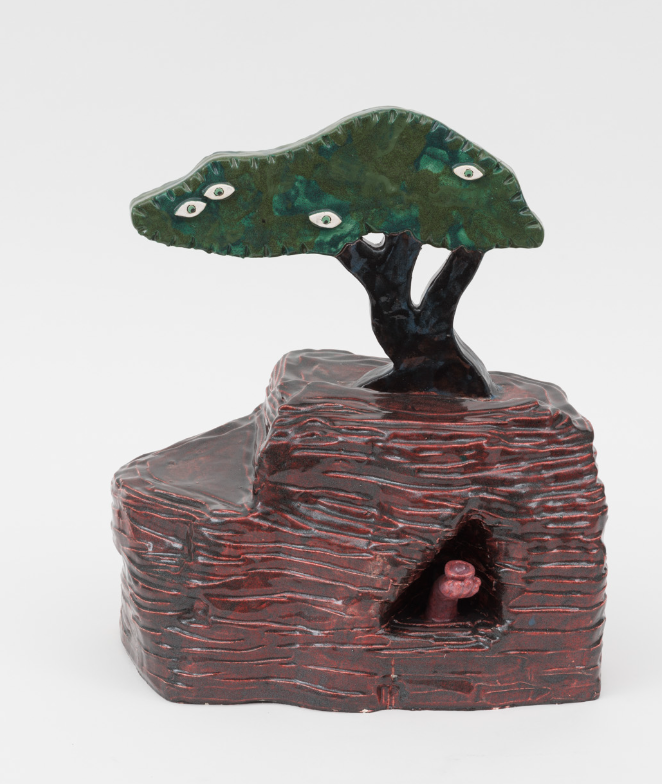
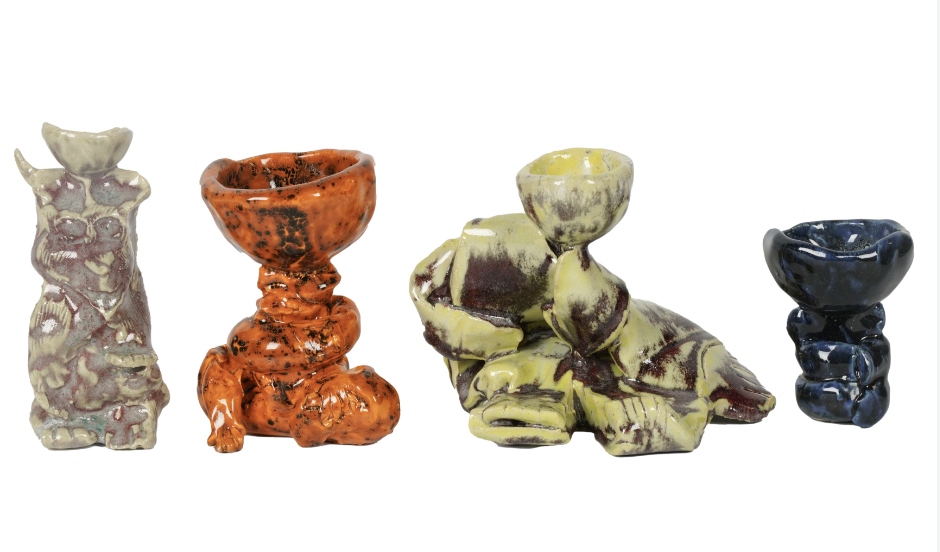
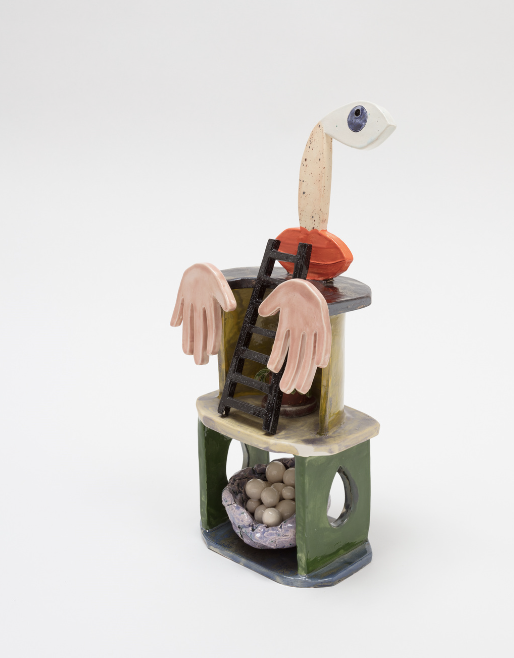
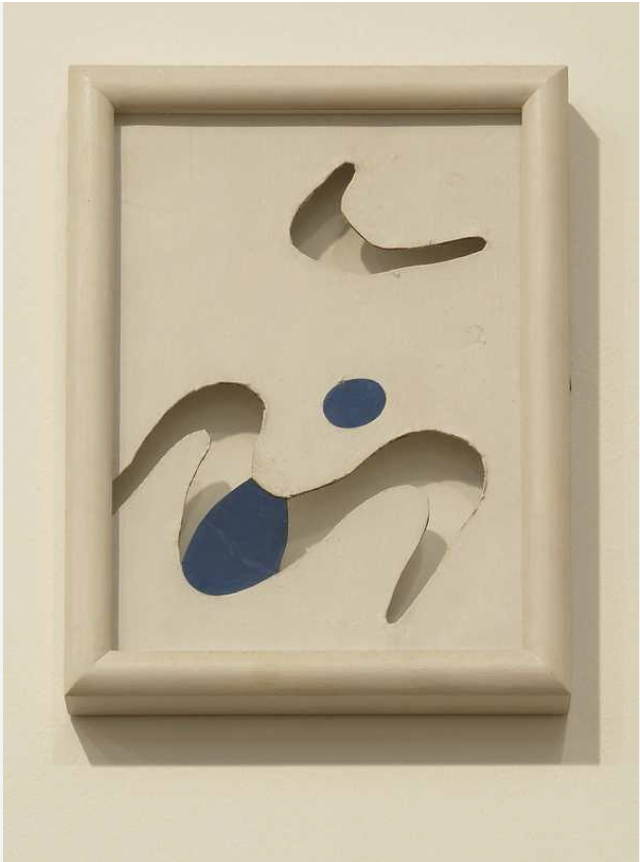
Jean/Hans Arp Jean (Hans) Arp was a French-German artist and poet known as a founding member of Dadaism. His abstract collages, paintings, and sculptures of organic forms were motivated by an interest in harnessing unconscious thought and parodying established ideas. “A painting or sculpture not modeled on any real object is every bit as concrete and sensuous as a leaf or a stone,” he once remarked. “But it is an incomplete art which privileges the intellect to the detriment of the senses.” Born Hans Peter Wilhelm Arp on September 16, 1886 in Strasbourg, Germany (present-day France), his mother was French and his father German—thus he used the first name Jean in French-speaking countries and Hans in German-speaking countries. During the 1910s, he was briefly involved in the milieu of Wassily Kandinsky and other members of the Der Blaue Reiter group in Munich, but moved to Zürich to avoid conscription into the German army during World War I. Here, Arp befriended Hugo Ball and met his future wife Sophie Taueber. During these years, the three of them participated in the famed Cabaret Voltaire and composed the Dadaist manifesto. The couple later relocated to France, where they collaborated with the Dutch artist Theo van Doesburg. World War II necessitated the two artists flee again to Switzerland, where Sophie died unexpectedly of carbon monoxide poisoning. Arp died on June 7, 1966 in Basel, Switzerland. Today, the artist’s works are held in the collections of the Tate Gallery in London, the Solomon R. Guggenheim Museum in New York, and the Art Institute of Chicago, among others.

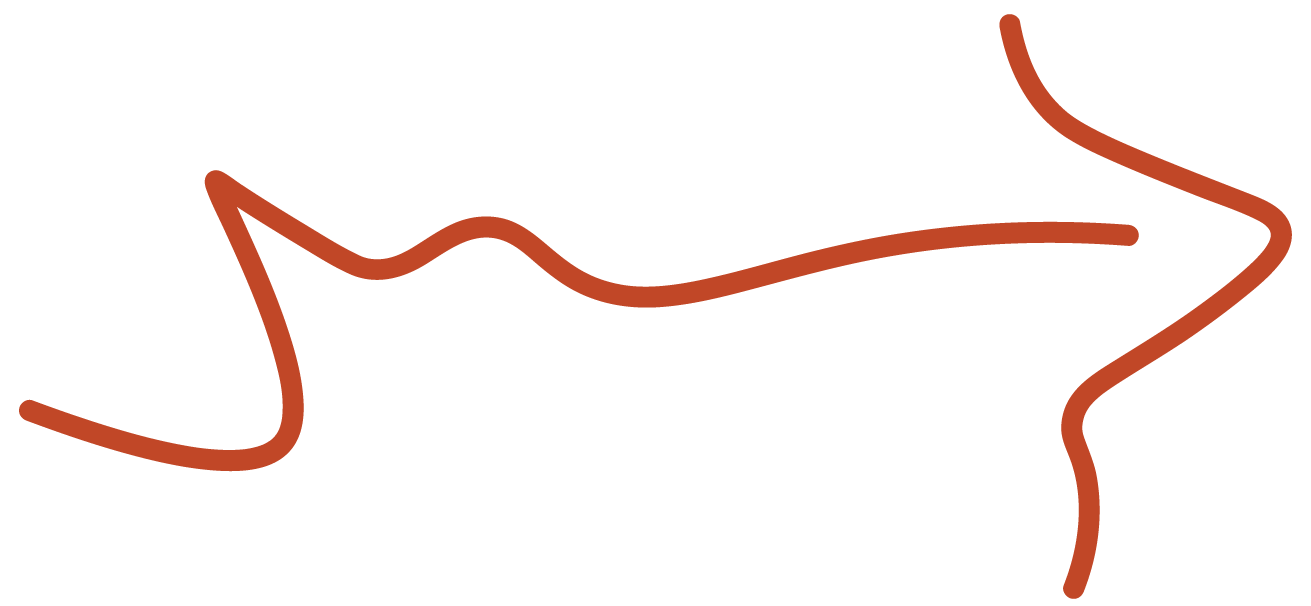

Finding inspiration and comfort in everyday objects and objects in general. A random discovery of a lamp shade on a cushion in my new home. At a time where objects are dormant waiting to come out from their hiding spot behind the sofa where they are considered to be part of a cumbersome task and chaos to find them a new place in their new environment.
Reflecting an endearing innocence.


Woody De Othello, sees everyday objects as holding a metaphor that reflect into other things in life. With that also tying in his cultural and diasporic background into his practice of ceramics.
"California-based artist whose subject matter spans household objects, bodily features, and the natural world. Everyday artifacts of the domestic tables, chairs, television remotes, telephone receivers, lamps, air purifiers, et cet era—are anthropomorphized in glazed ceramic, bronze, wood, and glass. Othello’s sense of humor manifests across his work in visual puns and cartoonish figuration. “I choose objects that are already very human,” says Othello. “The objects mimic actions that humans perform; they’re extensions of our own actions. We use phones to speak and to listen, clocks to tell time, vessels to hold things, and our bodies are indicators of all of those.” Othello’s scaled-up representations of these objects often slump over, overcome with gravity, as if exhausted by their own use. This sophisticated gravitational effect is a central formal challenge in his work. Informed by his own Haitian ancestry, Othello takes interest in the supernatural objects of Vodou folklore, nkisi figures, and other animist artifacts that inspire him. "


folkllore and tradition
https://www.youtube.com/watch?v=10DhK0tTUpI
Artists have been using egg symbolism for hundreds of years. Beyond breakfast, eggs can represent the seemingly contradictory ideas of new life and death. Eggs are a common symbol of loss of innocence but also purity because of their white shell; we see this correlation in white wedding dresses and the Pope’s cassock. Likewise, cracked eggs represent the tainting of one’s integrity. Artists also use eggs to symbolize fertility and a woman’s reproductive system. In this way, eggs convey sentiments of both the beginning and end of life.
Apart from the food aspect, eggs have been symbols of new life, fertility and rebirth since ancient times. The egg with its perfectly oval shape has featured in many an artist's works throughout the centuries, be it medieval paintings or contemporary steel sculptures.
At have ligesom blommen i et æg,sikkerhed, priviligeret, bestykket
Mundane object that holds a lot of meaning, unassuming yet historically represents metaphors in art.
The artwork presents a compelling and enigmatic vision, depicting a large egg positioned within a dark goblet or chalice. The egg is open at the top, and from within, two human eyes gaze out, lending a surreal and sentient quality to the object. The background features a textured gradient, ranging from lighter tones near the egg to a deep, shadowy perimeter that appears to enclose the focal image in a hazy atmosphere. The stark contrast and the abstract theme invoke a profound sense of mystery and introspection, common characteristics of Symbolist art, which seeks to express the ineffable aspects of human experience and the hidden emotional realities that lie beneath the surface of the physical world.
Richard Mortensen (born 23 October 1910 in Copenhagen, Denmark; died 6 January 1993 in Ejby, Denmark) was a Danish painter.
Mortensen studied between 1931 and 1932 at the Royal Danish Academy of Art in Copenhagen. Influenced by the works of Wassily Kandinsky, he developed an abstract style. In Copenhagen, Mortensen was joint founder of the "Linien" school of abstract painters.
In 1937, he undertook a study trip to Paris, where he met pioneers of surrealism, such as Roger Vitrac, Gala Éluard, Michel Leiris, Antonin Artaud, Raymond Queneau and André Masson. During the Second World War, Mortensen's works reflected the violence of Europe. He moved to Paris in 1947, remaining there until 1964. Together with Robert Jacobsen, Mortensen became connected to the Galerie Denise René in Paris, which became famous for concrete art. His later works are concrete works of art characterised by large, clear, bright colour surfaces.
Mortensen was awarded the Edvard Munch Prize in 1946, and the Kandinsky prize in 1950, and the Thorvaldsen medal in 1968. After his return to Denmark in 1964, he received a Professorship at the Royal Danish Academy of Art in Copenhagen, which he held until 1980.
the sculpting itself as performance and the act of looking as performance.
looking around the work and not in a static way, seeing movement
Processes and intuative making with clay and glazes
Kathy Butterly has created distinct, evocative sculptures for more than two decades, contributing to and expanding the tradition of studio ceramics. Through her practice, Butterly engages with concepts ranging from materiality and line to the history of the vessel. She uses traditional ceramic forms as her starting point, referring to these historical templates as her “canvas”; however, Butterly contorts and misshapes these forms in ways that veer toward the iconoclastic. She then adds layer upon layer of glaze – sometimes to the point of creating additional volume – and fires the works repeatedly. The colors and textures Butterly chooses and their relationship with each other are simultaneously seductive and jarring. Her strange forms and surprising palette decisions often generate an uncanny awareness in the viewer and produce a visceral impact.
Each of Butterly’s sculptures is unique and detailed. She eschews large-scale work, preferring instead to make concise, pithy compositions that express a wide variation of moods. Whether rising, collapsing, stalwart, or teetering, these sculptures exude a defiant and passionate individuality. Butterly exaggerates the echoes of figuration inherent in the vessel form, allowing the viewer to relate to her works on an intimate yet human level. The distinct, faceted personalities of these sculptures provide the works with their own raison d’être.
Her shapes and forms come from mass consumer vases/goods, the form doesnt change rather the colour changes the form of the work and informs how the work will look. When working with the pieces the scale and details are so intimate that you create your own universe and it becomes everything. The escapism of making the work.











Amongst my many nostalgic inspirations, 'old' cookbooks is one of them.
I think the culture surrounding food is constantly changing, it says a lot about the time and who we were and what the trends were when we look at the 'history' of food.
Classic still-lives give an insight about the opulent and about the poor, you could tell from the arrangement of food and the dinnerware what kind of status the subject would focus on.
It gives an insight into peoples lives.
If you look at cookbooks such as the 70's ones I draw inspiration from you can see this attempt to make the food alluring and exciting and new. The combinations are 'fresh' and supposed to show the best version of cooking that you can follow the example of.
Looking at these recipes with a contemporary view it seems so humoristic, and the combinations of ingredients seem unappetising. This adds a surreal element for me about a whole other culture and time that I want to imagine what was like and be a part of.
To me these kooky combinations of texture, colour and flavours become very sculptural. Using clay to recreate the essence of the recipes mirrors the domesticity back into the realm of which cookbooks exist and the tactility of bringing the dish to life and attempting to follow the beautiful example in the cookbook.
By first deconstructing the shapes and colours into drawings done with oil pastels I simplify and filter through what I find to be the most tactile and exciting parts of the food and then that gets once again transformed through the sculpting process becoming a more whimsical memory of each recipe.
The memory is interesting because in essence I haven't tasted or created the recipes from the book but through materiality I come in contact with the imagination of how these recipes would look and taste from my perspective and through my own lens. It becomes a sort of fictional dinner party.
An ode to a lost cooking art and the daring combinations of food.




Symbolism
The Infinite Library presents the multidimensional work of Los Angeles-based artist Julia Haft-Candell, comprising large-scale ceramic sculptures, drawings, paintings, and animations. Ever evolving, The Infinite references an alternative universe complete with its own values, ideology, and visual language, which is played out in Haft-Candell’s expansive four-part installation and documented in her The Infinite: Glossary of Terms and Symbols.
Manifesting a formal display, the first aspect of Haft-Candell’s installation presents large-scale ceramic work depicting hands interlocking with knots, chains, and infinity symbols presented on a massive stepped platform. These works articulate the expanding lexicon of her Glossary, further explored in the exhibition’s second element comprising image and text-based drawings and a stop-motion animation.











A still life (pl.: still lifes) is a work of art depicting mostly inanimate subject matter, typically commonplace objects which are either natural (food, flowers, dead animals, plants, rocks, shells, etc.) or human-made (drinking glasses, books, vases, jewelry, coins, pipes, etc.).